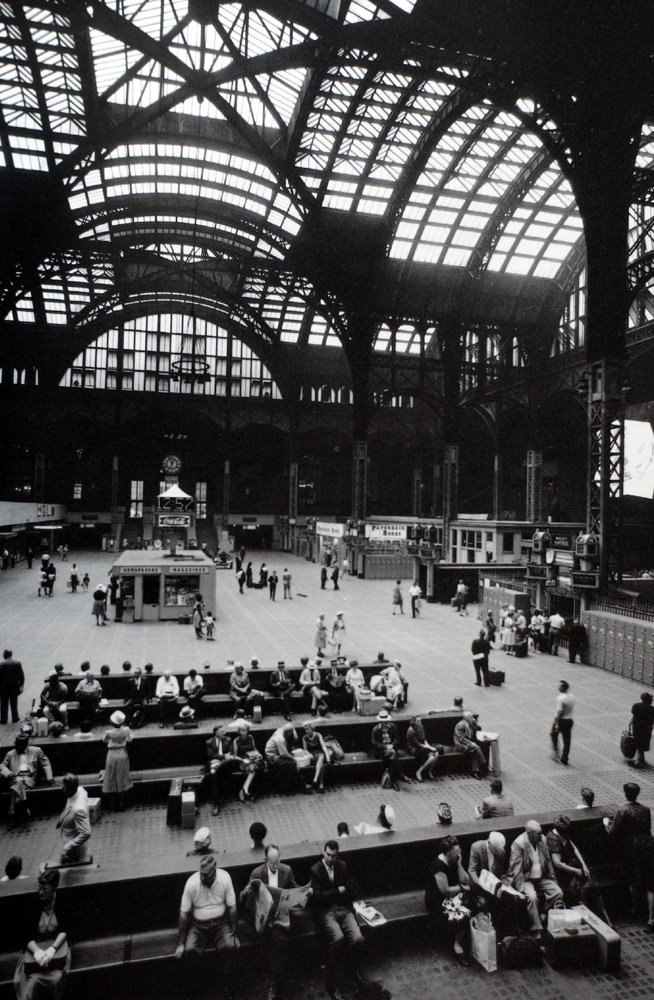For the moment, times are good at Madison Square Garden, as Knicks and Rangers fans alike have been rallying their teams through mostly successful post-seasons; it’s a rare combination for the Garden to have both teams in the playoffs. But when these post-seasons conclude, fans will be reminded of a looming NYC scheme that may demolish the present structure in exchange for an arena on a new site, and a re-produced version of Penn Station — completing a circle as Madison Square Garden has always been shadowed by its construction in 1963 as a replacement for the once grand, and now legendary, original Penn Station. MSG is unloved architecturally but has strong sentimental value for many in the metro area, and so the possibility of change stirs emotions.
What’s pushing decisions forward is that Madison Square Garden’s 50-year special arena permit has expired, which will give the New York City Planning Commission the opportunity to reevaluate and decide upon the most suitable future for the MSG/Penn Station site. 50 years ago, the permit in part prompted the destruction of the old Penn Station, an event that galvanized the city’s architectural and cultural communities towards preservation of other classic New York buildings, including Grand Central Terminal.
The expiration of the 50 year permit may help lead to the development of two new, distinctive additions to New York; a modern arena, and a train station that recalls the grandeur of the original. Design is not the only driving force for city planners; even more pressing is the inadequacy of the current Penn Station, submerged below the Garden, which handles travelers far beyond its capacity. Originally designed to handle 200,000 commuters a day, Penn Station now serves over 640,000, and the numbers are still growing.
While Madison Square Garden is prized for its history, it comes up short in keeping up with the newest arenas around the US, which makes the case for change. And as far as how the Garden adds to the streetscape, the Municipal Arts Society (MAS) of New York puts it well, stating, “what should be one of the most exciting and dynamic buildings in New York City, is one of the least.”
MAS, clearly having a strong opinion on the matter, has teamed up with the Regional Plan Association (RPA), where they are working together to build an Alliance for a New Penn Station. The Alliance’s primary plan of action is to recommend to the City Planning Commission that they grant MSG only a 10 year extension to the permit, in place of a renewal in perpetuity–or a permanent extension–which would ultimately destroy the chances of ever redeveloping and improving the currently inadequate Penn Station. Manhattan Borough President Scott Stringer publicly backed this recommendation as of late March.
MAS has also invited four prestigious architectural firms — Diller Scofidio + Renfro, SHoP Architects, SOM and H3 Hardy Collaboration — in a competition that focuses on the design of both the new Penn Station and the new Madison Square Garden, with work shown to the public on May 29. All four firms have the creative capacity to meet the challenge; it’s particularly interesting to have Diller Scofidio + Renfro in the mix, as two of the most successful public spaces in recent New York history — the High Line and the renovated Lincoln Center complex, are by their hand. PBS recently produced a profile of the firm (excerpt below), that is worth watching and considering as an example of how intelligent, creative problem solving can enhance and humanize enormous public spaces like Lincoln Center.
Watch Reimagining Lincoln Center & The High Line Preview on PBS. See more from Treasures of New York.
Below: The old Penn Station, demolished in 1963 to make way for Madison Square Garden. Photo by Peter Moore.
